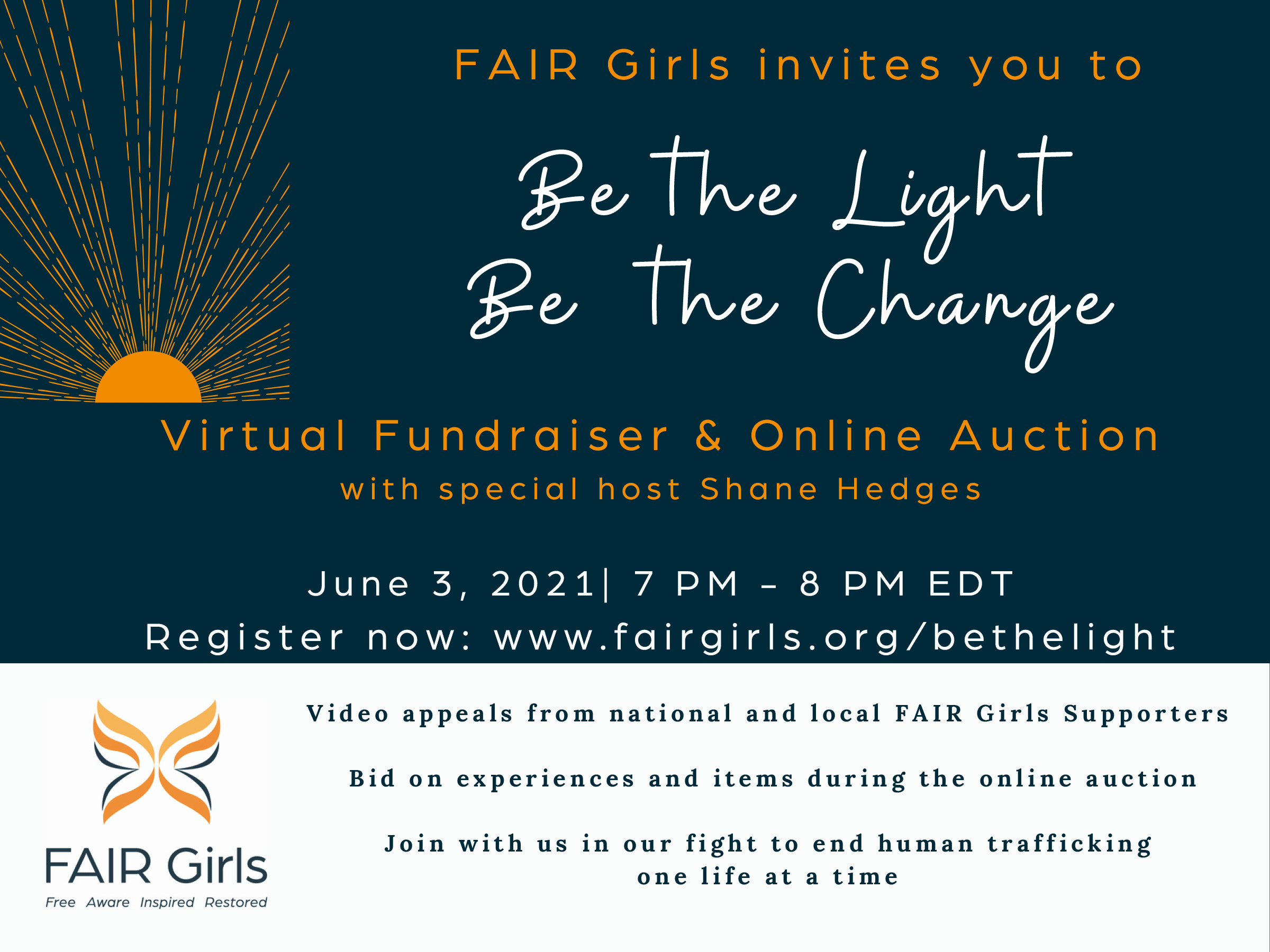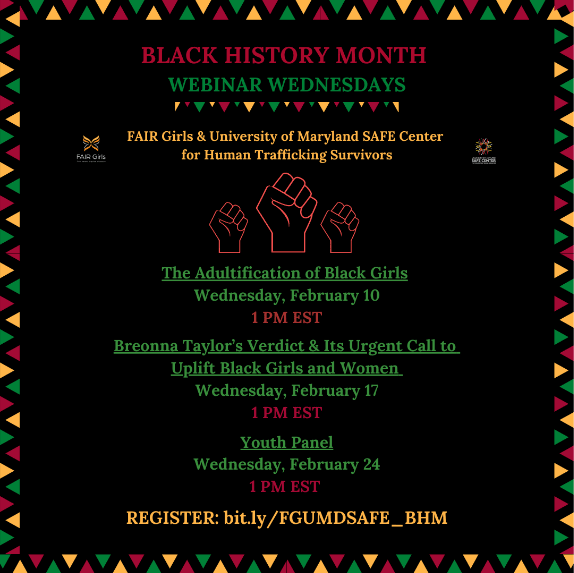Dear Friends & Supporters,
Happy Spring! It is hard to believe that it has been a year since COVID changed our world on almost every level. It has been an unimaginably difficult year in so many respects, but it is hard not to begin to see the light at the end of this long, dark tunnel. Spring is about new beginnings, emerging from the cold dark days of winter with a new perspective and renewed resolve. As the cherry blossoms bloom around the area, I am reminded that hope springs eternal even after the coldest of days. It is truly heartening that we may be starting to turn the corner with the help of the vaccination rollout. Even as we dare to believe better days are ahead, those of us on the frontlines of the anti-trafficking movement know that we are just beginning to see the true negative impact of the isolation, economic hardship, and increased online presence of youth caused by this pandemic. Even as we take a deep breath of fresh, spring air, we take stock and prepare ourselves for what still lies ahead and ensuring that we are here for the survivors that need us every day.
I cannot tell you how proud I am of our small but mighty FAIR Girls staff. They have gone above and beyond in circumstances that we would never have dreamed of. We are so proud that we have been able to keep our services available and accessible to survivors in need throughout the pandemic. It was never a question of whether we would, but rather, just figuring out how to do so safely and effectively. But we didn’t do it alone either! We could not have done it without the invaluable support of our wonderful and generous community partners and supporters. From donated safe extended-stay hotel rooms for survivors to quarantine in, to providing holiday meals and gifts for our Vida Home residents to purchasing emergency grocery gift cards for our youth clients whose families are suffering food scarcity during the pandemic, you have risen to the call to action every step of the way with us. Without your generous support and belief in our mission, we would not have been able to meet the needs of the flood of survivors who came to us for help during the pandemic.
And just like the courageous girls and young women we work with every day, we have not just survived this past year, we found ways to thrive too. We have strategically grown and made ourselves stronger despite the challenges we faced this past year. We are so excited about our new and expanded Drop-in Center opening this summer. Our new space will allow us to provide more survivors with expanded services and programming, including in-house therapy, hot meals, free laundry services, and economic empowerment programming in our dedicated workforce development space. While it has been a long road, we know being able to provide access to “one-stop-shop” comprehensive services for survivors is going to be a game-changer. Stay tuned for all of the exciting updates in the coming months!
I am also excited to announce that we are hosting our second virtual fundraiser LIVE on June 3 from 7:00 pm – 8:00 pm eastern. Be the Light, Be the Change is this year’s theme and we cannot think of a better one given all that we have been through and all the positive change we know we can make working together. It will be an uplifting and empowering hour, including video appeals, video performances, our online auction, and so much more. This is FAIR Girls’ biggest fundraiser of the year, so please mark your calendars and plan to join us for this celebration.
Thank you for your continued support and belief in our mission of ending human trafficking, one life at a time.
Be well,
Erin B. Andrews
Executive Director, FAIR Girls



